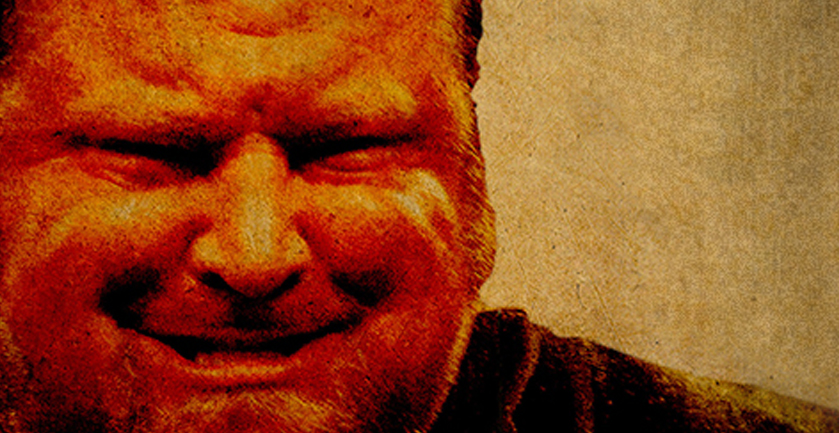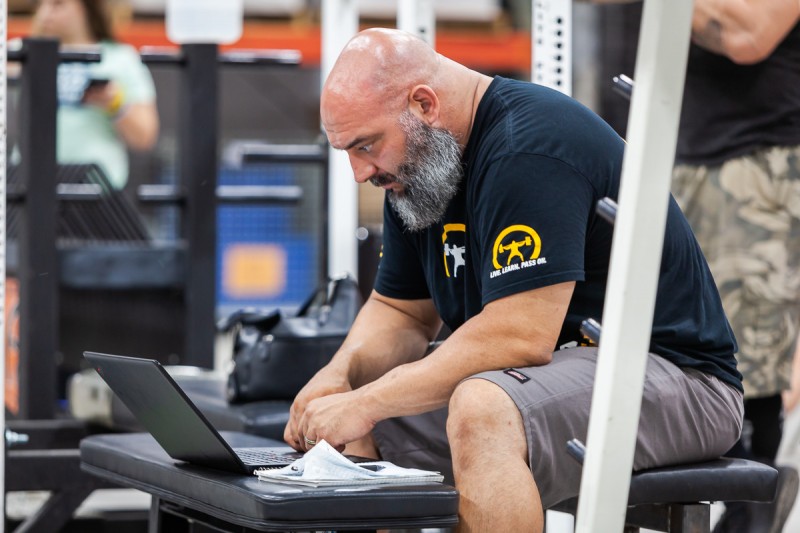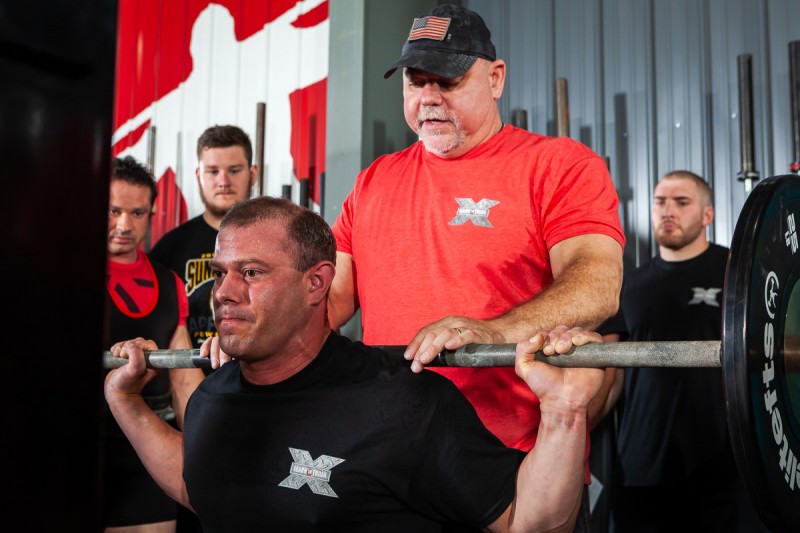
This is the last column in this five-part series of questions from a strength and conditioning intern. This column includes the last question and a short wrap-up of the series. This final question I will answer in two parts because even though the question asks how I track progress, I do agree that there are many ways to do this.
How are you evaluating the effectiveness of your programming for them?
Evaluating the effectiveness or tracking progress of your programming is very important. If we are not seeing progress in the right direction within an expected length of time, we must change things up. If we are seeing progress but it is not at the pace we want, then we need to change our goals or our programming. If we are not evaluating, then how do we even know if we are making progress at all? I tend to go about this in a much more relaxed manner then I would recommend for most trainers. I feel this way for a few reasons. The first is that I train clients only part-time right now, and it is not hard for me to remember where they started. The second is that I have been doing this for a very long time, and seeing even the smallest progress is just second nature at this point. Lastly, this question is from a strength and conditioning intern, and I just train people on my own. In a more professional setting, documentation is critical. Personally, I think the amount of documentation required, especially on the medical end, is overkill, but that is the way the system works now. I say hire quality, intelligent people and let them do their jobs. Any way you do it, the evaluation of progress or the lack thereof is crucial.
When I think of programming, I see it as a whole picture. I do not just think about or track benches, squats, and deadlifts. I think about sleep, nutrition, flexibility, mobility, strength, etc. Seeing it in this way can make doing a thorough evaluation very time consuming, but if you carry a lot of clients in a more professional setting, I think it can be worth it. This would look something like a daily “how is the client doing” paragraph in each of their notes. Mention mental awareness, how they are feeling, and how they have been sleeping. These types of things can be tracked with various questionnaires that the client can fill out, which will be assigned numbers. It also can be done by simply talking to the client and asking some simple questions. It can then be summarized in a paragraph or two in the client’s file, or you might have the client do a daily or weekly log of his or her own. It can be very helpful to have the client do a daily nutritional diary as well. Nowadays, we also have many apps that can help them to track these things and save the trainer/coach time. These are not fixed evaluation markers, but they can help to interpret how your programming is doing. This is especially true when it comes to mental health, sleep, and general attitude, all of which have a major impact on the body, training, and strength.
Next, I get into more fixed markers, which are much easier to read. Of course, body fat, body weight, and actual size measurements are great to keep track of. Many times athletes will need to put on weight, drop fat, or even stay the same size while increasing strength. These are some of the best and easiest ways to know if their nutrition is on point for the clients’ goals. I do feel like if you’re going to do one of these, it is well worth doing all three because the results from just one of these can be deceiving.
If you are dealing with any type of joint issue, it is very important to record ROM (range of motion) measurements. These are very easy to do with a simple goniometer and some anatomy knowledge. These measurements will not be perfect but will give both passive and active ROM. In this way, a trainer/coach can better track progress with flexibility and mobility.
When it comes to strength, speed, and force output, there are many different ways to track progress. The simplest way is to pick lifts, such as the squat, bench, deadlift, and to record the athlete’s one rep max. Other ways this can be done are by using the AMRAP (as many reps as possible) method. In this case, you use the same weight for a period of time and test how many reps the athlete can do with them. You can also use a one-rep-max equation. You can do this by having the athlete do as many reps as possible with a weight somewhere around 80 percent of his or her projected max. Then, use the equation of weight x reps x .0333 + weight = your estimated one rep max. Speed or force seems to be interpreted a bit differently, but I find speed mostly used in terms of sprinting, and force used more in terms of being explosive with weights. Running speed can easily be tested with sprints of varying yardage depending on the athlete’s needs and goals. For a football player, you may use 40 yards, whereas for a baseball player, maybe 90 feet is a better marker, for example. When wanting to track force generation over shorter movements for an athlete, like a fighter or thrower, recording bar speed during dynamic training can be very helpful. I find these to be some of the best and simplest ways to help evaluate if the program is increasing the client’s strength, speed, and force output.
So, these are all ways that are very effective in tracking and evaluating the progress of a program for an athlete or client. The question seemed to ask more specifically what I do to track the effectiveness of a program. Keep in mind that I train people part-time right now and do not have a huge load of clients. I have also been doing this for many, many years. I personally do not do a lot of actual recording of information; I don’t need too. After doing this for so many years, I remember a lot of things, such as the flexibility of clients or what they looked like when they came in. Things like how they moved or what kind of bad movement patterns they had. When I train people, I am looking for solutions to problems they have, and I am looking to meet the goals they have. Maybe they come to me with bad shoulder pain and want to be able to lift without that pain. In my initial evaluation, I find the area where they are lacking and shoot to get them into or as close to the normal range as possible. I test their strength and find imbalances, then shoot to even them out. One or a few degrees is not gonna matter too much to meet that goal. Are they feeling better and gaining more ROM?
RECENT: Undervalued Tools and Overused Methods in the Weight Room
If yes, then we are meeting the goal. As for strength, I do like to keep track of max effort work to make sure that we are progressing in strength. Most of the time, either I remember this or my clients remember it. I admit to being lazy and having them keep track themselves sometimes. I think this helps them to invest more in their own progress. I am also continually watching them move and how their build changes. If someone is building his posterior chain, you will see his body change. If he has weak rear delts and/or a weak upper back, you will see his shoulders change along with his posture. Basically, what I am saying is that sometimes we look too closely at the small details. This is great, and the scientist or numbers guys do great stuff with this information, but I am a trainer/coach. I want to see the big picture and the small details. I want to see the forest and the trees. Every time I am working with a client, I am looking at all these things and evaluating how he or she is progressing. Every time I watch clients walk in or talk to them about their days, I am learning how they are doing and evaluating them. Yes, I always want optimal gains, but more important is if they are moving in the right direction. In this industry, nothing happens overnight, and things are always changing; we must play the long game.
I found all of the questions this young intern asked to be great questions, and that is why I wanted to make them into this series. I personally feel like this industry has closed its eyes in some ways and just leans on tradition. The industry often talks about continuing education and advancements, but they seem to only want to find them where they want to look. They’re shunning some of the greatest information out there that could advance their industry. I urge today's strength and conditioning interns to keep open and logical minds. If you’re looking to get athletes stronger, why not look to the strongest strength athletes and their coaches? When looking to increase flexibility and mobility, look to the greatest trainers and coaches who excel in that area. Tradition is great and can create a great base to be able to fall back on, but never stop trying to advance it. Never think that is it and all you need to know. There is always more! Everything continues to advance and improve. You never know where that new advancement might come from, either, so don’t close your mind by expecting it to come from a certain place.
I feel like it is also important to remember that we do this for our clients and athletes. It isn’t about us; it is about them. It is not about doing what we want to do in the manner we want to do it; it is about doing what is best for them. It is not about making ourselves famous trainers or trying to prove a theory through our clients. Have pride and trust in your own knowledge, but don’t be arrogant. Listen to what your clients/athletes have to say. Listen to others in the field you respect. Understand that no matter how smart or knowledgeable you get, there is always more. Once you stop learning, or when you think you know it all, you are hurting not only yourself but also your clients/athletes.
I have been lifting and training for most of my life now. I have learned so much about strength, lifting, and life throughout this journey. I am coming to a point in my life where I feel almost blessed to be able to help others along the way in their own journeys of strength, health, and lifting. I am for the first time moving toward making this my main career choice because of this. I admit that it is a bit different balancing making a living with something I just love to do. My point here is that it is an amazing thing to be able to help people to grow their bodies because no matter how you do it, their minds, hearts, and souls will grow, too. You have the chance to have a major impact on the lives of the clients/athletes you work with. Never lose that perspective, and never forget there is always more.
The rest will work itself out!












